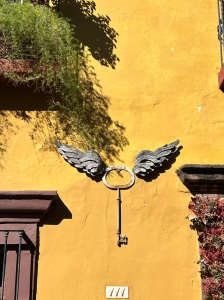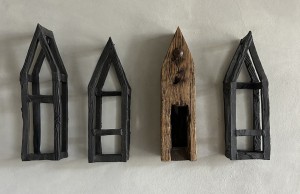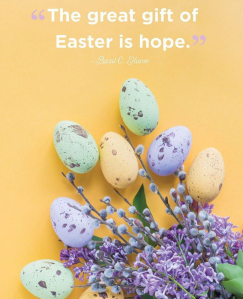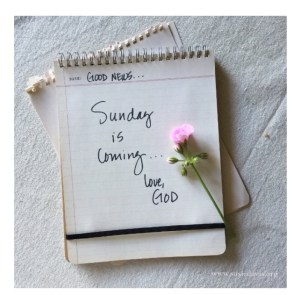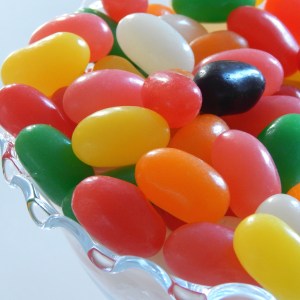 Happy Cinco de Mayo! Today is a traditional day of celebration but do you even know why?
Happy Cinco de Mayo! Today is a traditional day of celebration but do you even know why?
 Cinco de Mayo, or May 5th, celebrates the date when the Mexican army declared victory over France in 1862 at the Battle of Puebla during the Franco-Mexican War. It is not Mexican Independence Day, which is September 15, or Dies y Seis de Septiembre, which was declared more than 50 years before the Battle of Puebla. Surprisingly, while Cinco de Mayo is popular in the U.S., it a relatively minor holiday in Mexico.
Cinco de Mayo, or May 5th, celebrates the date when the Mexican army declared victory over France in 1862 at the Battle of Puebla during the Franco-Mexican War. It is not Mexican Independence Day, which is September 15, or Dies y Seis de Septiembre, which was declared more than 50 years before the Battle of Puebla. Surprisingly, while Cinco de Mayo is popular in the U.S., it a relatively minor holiday in Mexico.
One way many of us celebrate Cinco de Mayo is by enjoying a margarita, but how did the popular drink become so entwined with the holiday?
 Many believe it’s nothing traditional but rather thanks to the invention of the frozen margarita machine, created by Mexican-American restaurateur Mariono Martinez in the early 1970’s. The machine not only made a yummy frozen version of the cocktail, but one that was easy to serve to the masses.
Many believe it’s nothing traditional but rather thanks to the invention of the frozen margarita machine, created by Mexican-American restaurateur Mariono Martinez in the early 1970’s. The machine not only made a yummy frozen version of the cocktail, but one that was easy to serve to the masses.
The margarita itself, however, does have historic origins albeit often debated ones. Living in Texas, I’m of the belief it originated in the legendary Cadillac Bar in Nuevo Laredo, Mexico, just over the border of Laredo, Texas and a place I’ve enjoyed a marg or two. The bar is known for its “Cadillac Margarita” and it’s a story I’m sticking to. There are many others though.
Most origins involve places in Mexico between the 1930s and 1940s and typically involve a bartender and a women named Margarita. One of the most popular ones involves an American socialite named Margarita Sames who claimed her friend Tommy Hilton invented a cocktail named after her and put it on his hotel menus. Paris must be proud.
 Another rumor dates back to 1941 when bartender Don Carlos Orozco from Ensenada, Mexico offered his concoction to Margarita Henkel, the daughter of a German Ambassador. Mozart must be proud.
Another rumor dates back to 1941 when bartender Don Carlos Orozco from Ensenada, Mexico offered his concoction to Margarita Henkel, the daughter of a German Ambassador. Mozart must be proud.
Last but not least is the story of Danny Negrete, who created a drink as a wedding gift for his sister-in-law named Margarita. Negrete has another connection to a woman named Margarita, none other than Rita Hayworth whose real name was Margarita Cansino and who performed at the Caliente Race Track, where Negrete worked.
 Traditionally made with tequila, lime juice, and triple sec, but everyone has their favorite version. Mine is an old college friend’s recipe of a can of frozen lime juice, that empty can full of tequila, and then that empty can full of a beer. Surprisingly, the margarita is actually a descendant of the daiquiri, which dates back to the Royal Navy’s rum stations. Whatever its origins, by the early 20th century, the margarita had arrived and is today one of the most popular cocktails around the world, ranking No. 7 on Drinks International’s list of the world’s 50 best-selling cocktails.
Traditionally made with tequila, lime juice, and triple sec, but everyone has their favorite version. Mine is an old college friend’s recipe of a can of frozen lime juice, that empty can full of tequila, and then that empty can full of a beer. Surprisingly, the margarita is actually a descendant of the daiquiri, which dates back to the Royal Navy’s rum stations. Whatever its origins, by the early 20th century, the margarita had arrived and is today one of the most popular cocktails around the world, ranking No. 7 on Drinks International’s list of the world’s 50 best-selling cocktails.
 Something else I love as much as margaritas and is associated with Cinco de Mayo are mariachi bands. What is more festive than a marg in hand and a mariachi band? Mariachi is actually the group of musicians not the style of music and a mariachi band is generally composted of at least two violins, two trumpets, a Spanish guitar, and two other types of guitars usually a vihuela and guitarron. In the 1950s trumpets and a harp were added and all of this combined is what today’s mariachi bands look like. And even though when you think of a mariachi band you think of a group of males, I love that females are often part of one and that there are even all female mariachi bands. What they wear is as infamous as the sound of their music.
Something else I love as much as margaritas and is associated with Cinco de Mayo are mariachi bands. What is more festive than a marg in hand and a mariachi band? Mariachi is actually the group of musicians not the style of music and a mariachi band is generally composted of at least two violins, two trumpets, a Spanish guitar, and two other types of guitars usually a vihuela and guitarron. In the 1950s trumpets and a harp were added and all of this combined is what today’s mariachi bands look like. And even though when you think of a mariachi band you think of a group of males, I love that females are often part of one and that there are even all female mariachi bands. What they wear is as infamous as the sound of their music.
Called “charro” suits, the distinctive ornate horseman suits are often attributed to General Portofino Diaz who ordered the poor peasant musicians to don the outfits in order to look good for a visit by the U.S. Secretary of State. This visit took place in 1907 and the garments have remained ever since.
 Some historians believe the name “mariachi” is derived from the French word mariage, meaning “wedding,” and it is fitting as mariachi groups still form an essential part of weddings in Mexico and elsewhere. Not having a mariachi band at our wedding either walking out of the church or entering our reception is the only regret I have of that special day. What was I thinking?!
Some historians believe the name “mariachi” is derived from the French word mariage, meaning “wedding,” and it is fitting as mariachi groups still form an essential part of weddings in Mexico and elsewhere. Not having a mariachi band at our wedding either walking out of the church or entering our reception is the only regret I have of that special day. What was I thinking?!
Mariachi bands are known for their distinct style of music, but they play many different types although most are closely related to what is called ranchera music, songs that were literally sung on Mexican ranches. The music centered around traditional themes of love, patriotism, and nature and they rhythm of the music can be similar to that of a waltz, polka, or bolero. Ole!
 Lastly there is the beloved pinata, another Cinco de Mayo staple. You will find them in all shapes and colors and they are also popular at birthday parties and Christmas in Mexico. The origin of these festive party favors is very interesting and has a spiritual meaning
Lastly there is the beloved pinata, another Cinco de Mayo staple. You will find them in all shapes and colors and they are also popular at birthday parties and Christmas in Mexico. The origin of these festive party favors is very interesting and has a spiritual meaning
Spanish priests used pinatas as a method of faith conversion and Aztecs celebrated the birth of the Aztec god of war. Missionaries gave the pinata increased religious meaning and the original pinata has the shape of a star with seven points. These seven points symbolized one of the biblical Seven Deadly Sins of wrath, envy, gluttony, greed, lust, pride, and sloth. The stick, which is used to break the pinata, symbolizes a method to destroy those seven sins. A pinata’s bright colors represent temptation while the blindfold used on whoever is trying to break open the pinata stands for faith. Lastly, the candy and prizes inside represent forgiveness and new beginnings. Who knew, right?!
So there you have it; everything you wanted to know about today’s celebrations. So as you toast your margarita, dance to mariachi music, and maybe bash a pinata, know that everything you do has meaning behind it. That’s life though, right?





















































